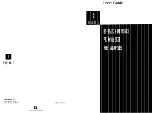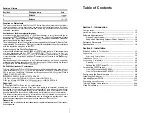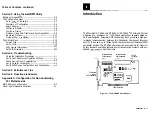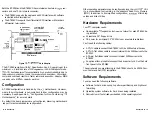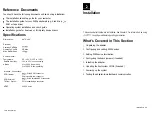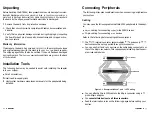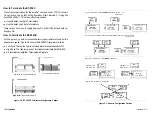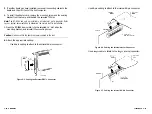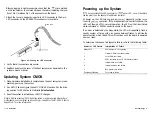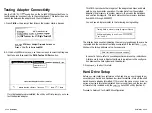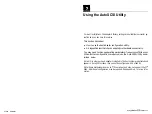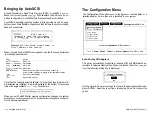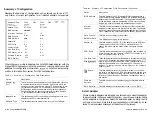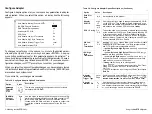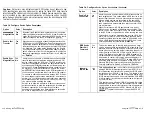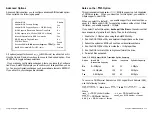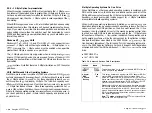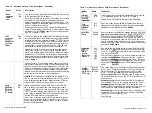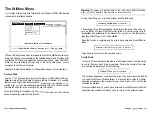
Cable length should follow the SCSI specification. Where the data transfer
rate is
the cable should be no more than 20 feet long; where the
data transfer rate is 10
it should be no longer than 10 feet. Where
both and
devices are connected to the same channel, the cable
should be less than 10 feet for a 10
data transfer rate. In addition,
drives should be equally distributed on each channel for best performance.
Termination settings on your Wide SCSI host adapter are as follows:
n
Low Byte
terminates data bits O-7.
n
High Byte
terminates data bits 8-15.
n
Low Byte
and
High Byte
together
(default)
terminate all signals.
Table 2-l indicates what your Low Byte and High Byte settings should be
based on the connector and the attached devices
or
Setting the SCSI Device ID
Each SCSI device is assigned a unique SCSI ID ranging from 0 through 7
for
devices, or 0 through 15 for
devices. Most SCSI peripheral
devices are shipped with a preassigned SCSI ID number. Your
adapter is by default
SCSI ID 7.
If you need to change the SCSI ID for a peripheral device refer to the in-
structions in its owner’s manual. A SCSI ID jumper or switch is usually lo-
cated on the peripheral’s back panel.
Table 2-1. Termination Options
External
Internal
Connector Connector
8-bit On On
Select if the adapter is
ured at the end of the SCSI
On On
chain using only one of the
On On
On
Select if the adapter is in the
middle of a SCSI chain, but is
configured with one
and
one
connector. Termina-
tion is required on the cable
ends or on the devices at the
ends of the cable.
The only time you may need to change the adapter’s SCSI ID is when mul-
tiple adapters share the same SCSI bus. To change your adapter SCSI ID
use the Host
Adapter SCSI ID
option on the
Configuration
Menu (Section 3, “Using the
Utility”).
Off
On
Note: BIOS looks for the boot drive by scanning devices according to their
ID, starting at
ID 0. If your boot drive is at a higher number than another
drive, BIOS will boot from the other drive. In this case, you need to change the
ID of the desired boot drive to a lower value.
Off
Off
No termination
is required if the
adapter is in the middle of the
SCSI chain using two
connectors with
devices.
Off
On
High Byte must be
On
if the
adapter is in the middle of the
SCSI chain using two 68-pin
connectors with one attached to
devices
only.
Terminating SCSI Devices
Terminators are required for reliable operation of the SCSI bus. The first
and last SCSI devices connected together on a SCSI bus must have termi-
nators installed or enabled. Terminators can be connected to either the
SCSI device itself or affixed to the SCSI cable ends.
Note the following:
This table assumes that you would use the 50-pin connector to connect
internal
devices and, therefore, does not include settings for
devices on the internal
connector.
When
and
devices are mixed on the cable attached to a
pin connector, you still need to terminate all signals.
Where you are installing mixed devices (i.e.,
and
devices), ter-
mination is a little more complicated. Even where the host adapter is in the
middle
of the SCSI chain, there are configurations where you may still have
to turn on termination on the adapter itself, in addition to the terminators
on both ends of the chain.
n
installation
Installation
n
Summary of Contents for BT-956C
Page 1: ...m w h 0 0 0 m z n ...

